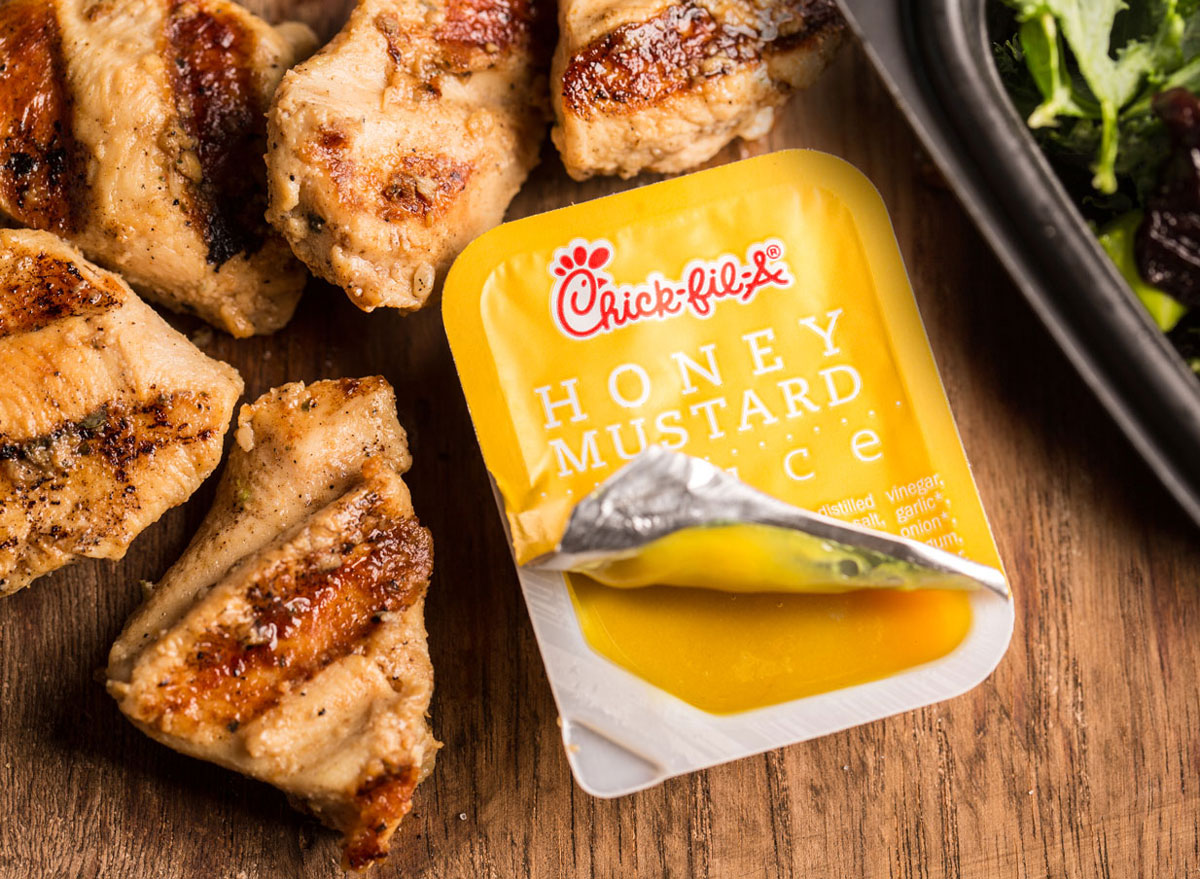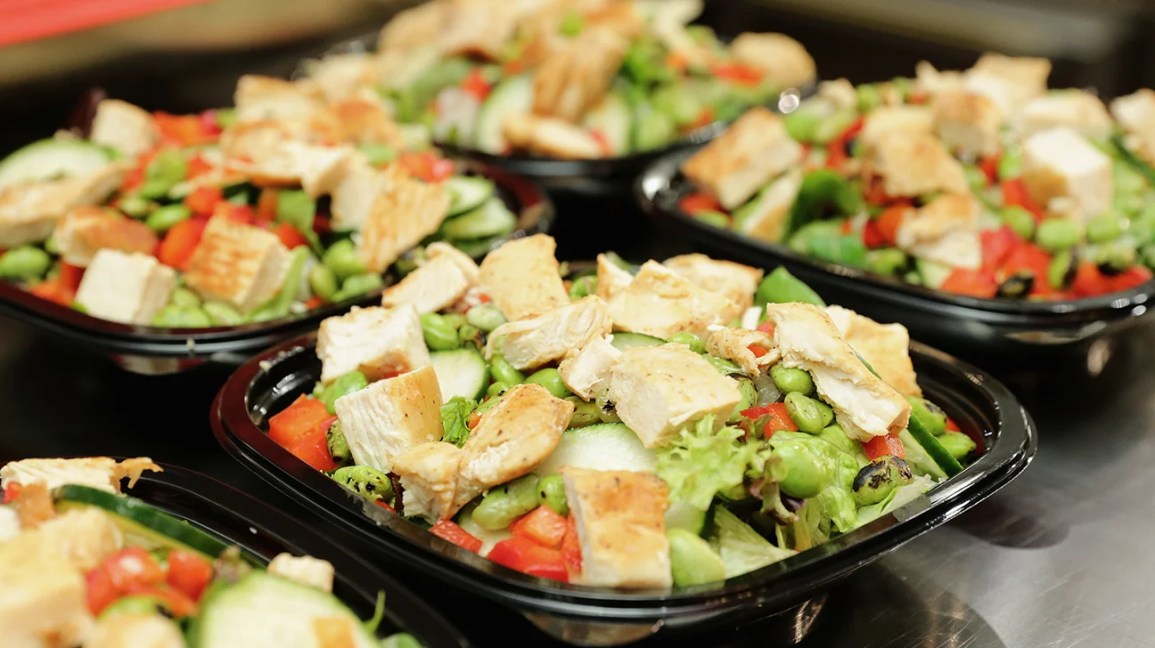Low sodium fast foods offer a healthier alternative to traditional fast food options, with reduced sodium content that is beneficial for people watching their salt intake. In recent years, there has been an increased demand for low sodium options due to the potential health risks associated with high sodium diets.
Table of Contents
Fast food restaurants have responded to this demand by introducing low sodium menu items that are both delicious and health-conscious, making it easier for individuals to make mindful choices while enjoying the convenience of fast food. With a variety of low sodium options available, it is now possible to enjoy a quick and tasty meal that aligns with your dietary preferences and goals.

Credit: www.healthline.com
Understanding The Dangers Of High Sodium Intake
Eating out is convenient, especially in our fast-paced lives. However, many fast foods are notorious for their high sodium content. While sodium is an essential nutrient needed for our body to function properly, consuming too much can have serious health consequences. In this section, we will explore the link between sodium and health issues, recommended daily sodium intake, and the risks associated with consuming excessive amounts of sodium.
The Link Between Sodium And Health Issues
Sodium plays an important role in maintaining fluid balance, transmitting nerve impulses, and regulating blood pressure. However, when we consume an excessive amount of sodium, it can have detrimental effects on our health. Research has shown a strong association between high sodium intake and an increased risk of developing certain health conditions.
One of the main concerns is the impact of sodium on our blood pressure. When we consume too much sodium, our body retains extra water to balance the concentration of sodium in our bloodstream. This can lead to increased blood volume, putting additional strain on our blood vessels and raising our blood pressure. Over time, consistently high blood pressure can increase the risk of heart disease, stroke, and kidney problems.
Recommended Daily Sodium Intake
It’s important to be aware of the recommended daily sodium intake to ensure we are not exceeding the recommended limits. The American Heart Association suggests consuming no more than 2,300 milligrams of sodium per day for most adults. However, for individuals with certain health conditions like high blood pressure or kidney disease, the recommendation is even lower, around 1,500 milligrams per day.
While these recommendations may seem straightforward, it is worth noting that many fast foods can contain a significant amount of sodium in a single meal, often surpassing our daily recommended intake. Therefore, being mindful of our food choices and opting for low sodium alternatives is crucial in protecting our health.
The Risks Of Consuming Excess Sodium
Consuming excess sodium poses various risks to our health. Here are some of the potential consequences:
- High Blood Pressure: as mentioned earlier, excessive sodium intake can raise blood pressure, increasing the risk of heart disease, stroke, and kidney problems.
- Fluid Retention: high sodium consumption can lead to fluid retention, causing bloating, puffiness, and swelling, particularly in the hands, feet, and ankles.
- Osteoporosis: a diet high in sodium can promote calcium excretion through urine, potentially weakening our bones and increasing the risk of osteoporosis.
- Stomach Cancer: research suggests that diets high in sodium may be associated with an increased risk of developing stomach cancer.
It is crucial to be mindful of our sodium intake and make informed choices when it comes to our fast food options. By opting for low sodium alternatives and being conscious of the risks associated with excessive sodium consumption, we can take control of our health and well-being.
:max_bytes(150000):strip_icc()/one-pan-chicken-and-asparagus-bake-bbe977312b884f1aae7648d004cefb0a.jpg)
Credit: www.eatingwell.com
Benefits Of A Low Sodium Diet
Adopting a low sodium diet can have a multitude of benefits for your overall health and well-being. By reducing your sodium intake, you can significantly decrease your risk of developing various health conditions and promote a healthier lifestyle. In this article, we will dive into the key benefits of a low sodium diet, including reduced risk of hypertension, improved heart health, and lowered risk of kidney disease.
Reduced Risk Of Hypertension
Hypertension, also known as high blood pressure, is a serious medical condition that can lead to stroke, heart attacks, and other cardiovascular disorders. One of the major contributors to high blood pressure is excessive sodium consumption. When you consume high levels of sodium, your body retains more water, causing an increase in blood volume and pressure on your blood vessels.
By following a low sodium diet, you can effectively reduce your risk of hypertension. Limiting your sodium intake helps your body maintain a healthier fluid balance, preventing unnecessary strain on your heart and blood vessels. It is recommended to keep your daily sodium intake below 2,300 milligrams, and even lower if you have certain health conditions or are at risk for hypertension.
Improved Heart Health
Another significant benefit of a low sodium diet is improved heart health. Excessive sodium intake can lead to conditions such as congestive heart failure, which occurs when your heart is unable to pump enough blood to meet your body’s needs. When you consume high levels of sodium, your body retains more fluids, placing additional strain on your heart.
By reducing your sodium intake, you can help relieve this strain on your heart. A low sodium diet promotes proper fluid balance in your body, reducing the risk of fluid accumulation and heart-related issues. This, in turn, can lead to a healthier heart and a decreased likelihood of developing cardiovascular diseases.
Lowered Risk Of Kidney Disease
Chronic kidney disease is a condition that affects millions of people worldwide and can result in kidney failure if left untreated. High sodium intake has been linked to an increased risk of kidney disease and can exacerbate existing kidney conditions. When you consume excess sodium, your kidneys have to work harder to eliminate it from your body, leading to potential kidney damage over time.
By adopting a low sodium diet, you can lower the risk of developing kidney disease and protect your kidney function. By reducing the strain on your kidneys, you give them the opportunity to function optimally and maintain overall kidney health. Monitoring your sodium intake is crucial, especially if you have a family history of kidney disease or are already experiencing kidney-related issues.
Identifying Low Sodium Fast Food Options
When it comes to fast food, most people assume it’s high in sodium. While that may be true for many options, there are ways to identify low sodium fast food choices. By understanding how to read nutrition labels, choosing fresh ingredients, and being aware of specific low sodium fast food chains, you can make healthier choices without compromising convenience or taste.
Reading Nutrition Labels
One effective way to identify low sodium fast food options is by reading nutrition labels. By examining the sodium content per serving, you can quickly determine whether a particular item is suitable for a low sodium diet. When reading nutrition labels, look for the following information:
- Check the sodium content per serving size. Ideally, you should look for foods that contain less than 140 milligrams of sodium per serving.
- Avoid high sodium additives such as monosodium glutamate (MSG) or sodium nitrate, which are commonly used in processed foods to enhance flavor and extend shelf life.
- Pay attention to the portion size. Sometimes, a low sodium food can still contribute to your daily intake if the serving size is larger than what you would typically consume.
- Compare similar food options and choose the one with the lower sodium content. Even small variations in sodium levels can make a difference in your overall intake throughout the day.
Choosing Fresh Ingredients
Another way to ensure lower sodium fast food options is by choosing fresh ingredients. Many fast food restaurants now offer salads, wraps, and sandwiches made with fresh ingredients. When ordering, consider the following:
- Opt for fresh vegetables and fruits to increase fiber and nutrient content while minimizing sodium intake.
- Choose lean proteins such as grilled chicken or fish to avoid excessive sodium from processed or cured meats.
- Ask for low sodium dressings or sauces or request them on the side to control your intake.
- Consider whole grain options for buns or wraps to add more fiber and decrease sodium compared to white bread alternatives.
Specific Low Sodium Fast Food Chains
Several fast food chains understand the importance of healthier options and have started offering low sodium choices. Here are a few examples:
| Fast Food Chain | Low Sodium Options |
|---|---|
| Burger Joint | Grilled chicken sandwich with no salt added |
| Taco Place | Veggie burrito with fresh ingredients and low sodium salsa |
| Salad Spot | Custom-made salad with fresh veggies and reduced sodium dressing |
By being aware of these specific low sodium fast food options, you can confidently make choices that align with your dietary needs.

Credit: www.eatthis.com
Frequently Asked Questions Of Low Sodium Fast Foods
What Fast Food Is Low-sodium?
Some fast food options with low sodium include grilled chicken sandwiches or salads without dressings, and plain hamburgers with no added salt.
What Can I Eat Fast Without Salt?
Fast and salt-free snack ideas include fresh fruits, raw vegetables, unsalted nuts, yogurt, and whole-grain crackers.
Can I Eat Pizza On A Low-sodium Diet?
Yes, you can eat pizza on a low-sodium diet by choosing low-sodium toppings, using less cheese and sauce, and opting for thin crusts. It’s important to check the nutrition information and control portion sizes to manage your sodium intake accurately.
What Kind Of Food Can You Eat On A Low-sodium Diet?
On a low-sodium diet, you can eat foods that are low in salt, such as fresh fruits and vegetables, whole grains, lean proteins like fish and poultry, and dairy products with low sodium content. Avoid processed foods, canned items, and salty snacks.
Conclusion
Low sodium fast foods offer a convenient and healthier option for those looking to maintain their sodium intake. With increased awareness of the detrimental effects of excessive sodium consumption, these alternatives provide tasty choices that won’t compromise our health. By opting for lower sodium options, we can support our well-being while still enjoying the convenience of fast food.
Make a conscious effort to prioritize low sodium options and take control of your health one meal at a time.

